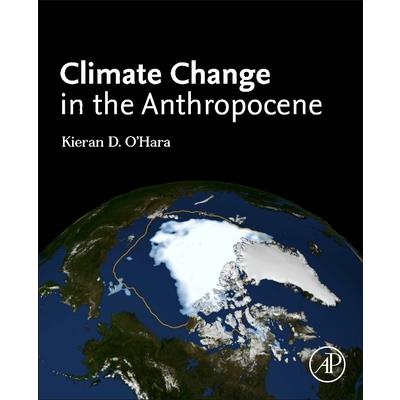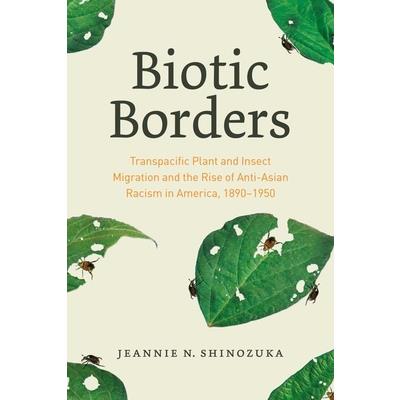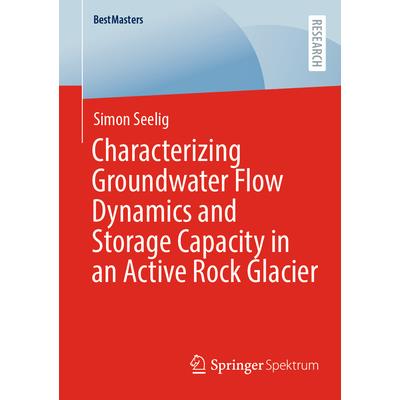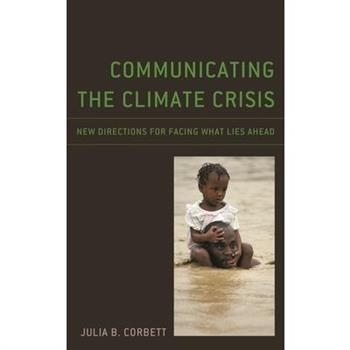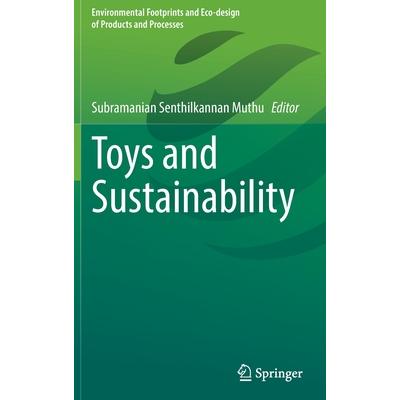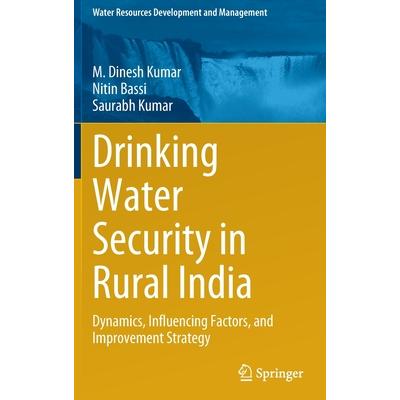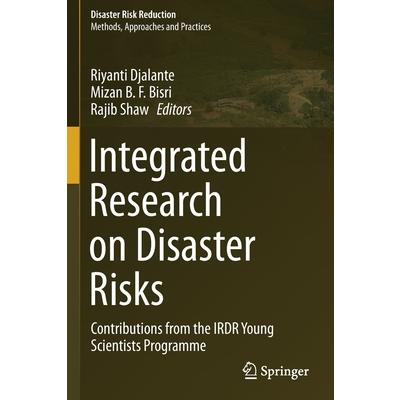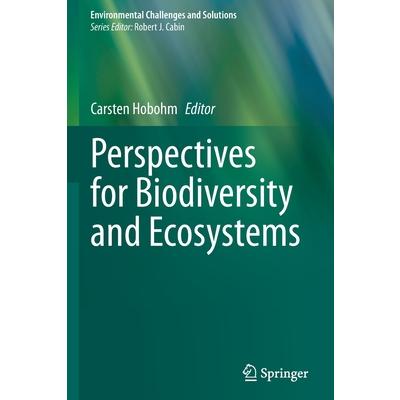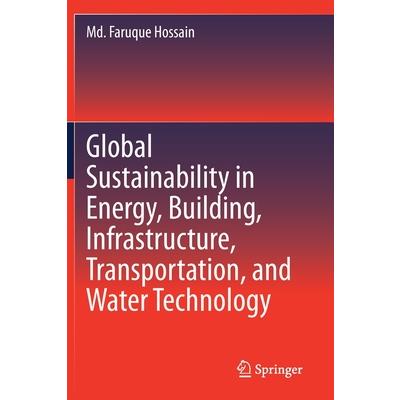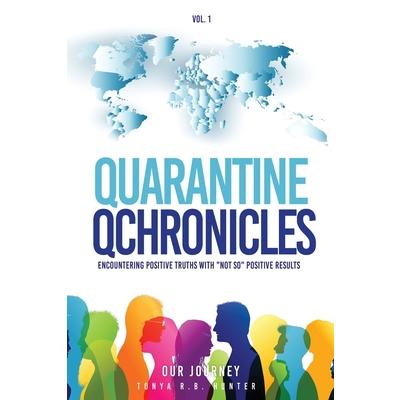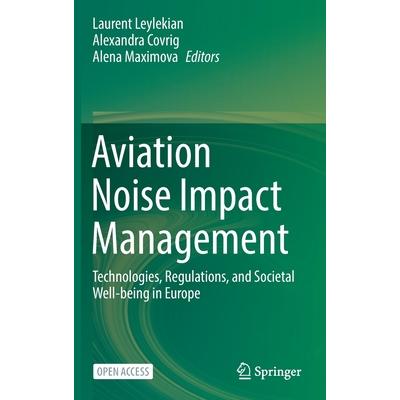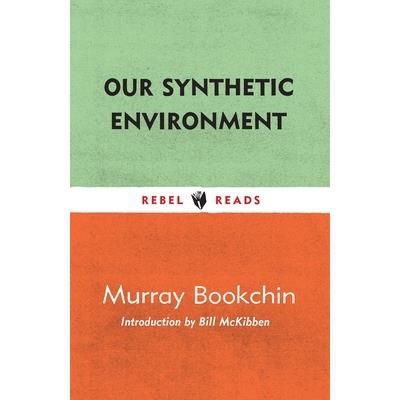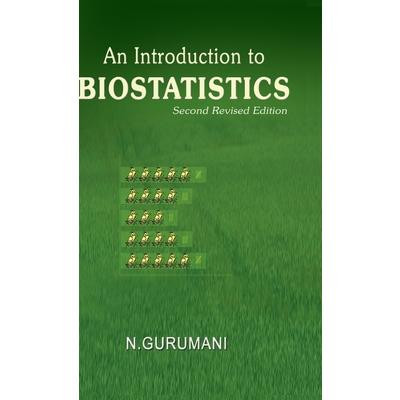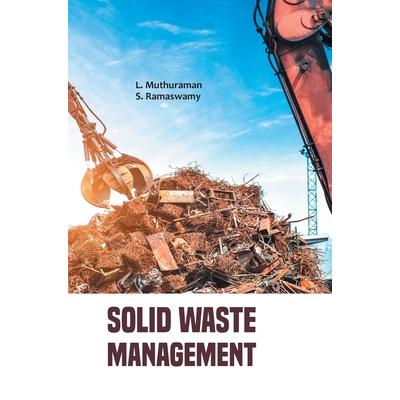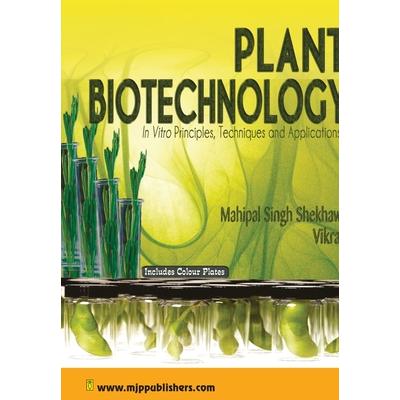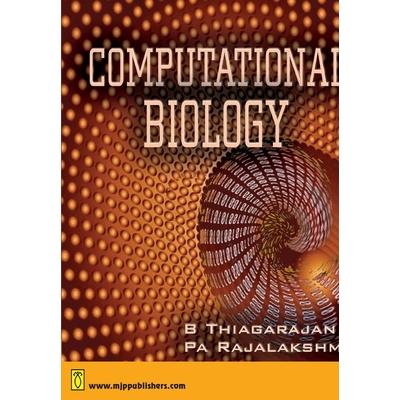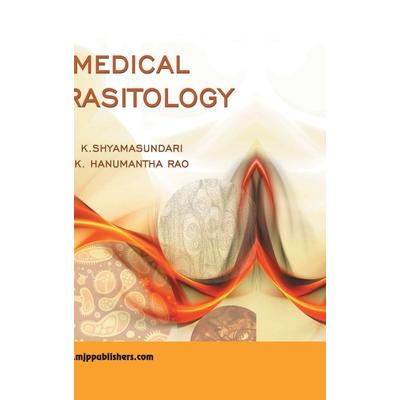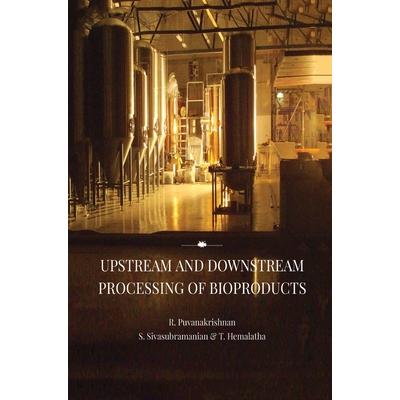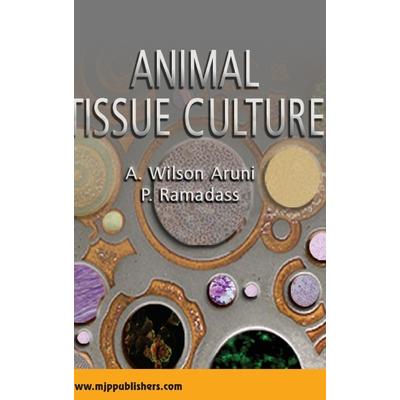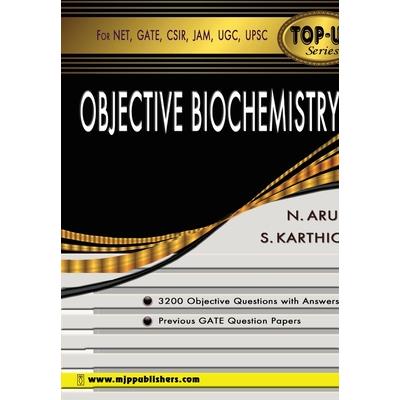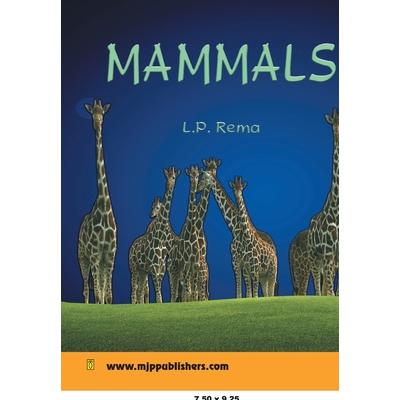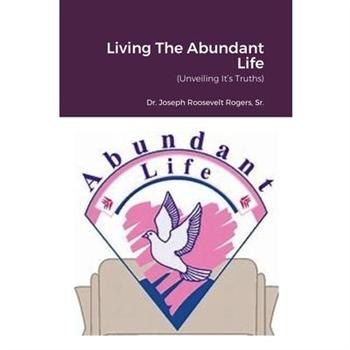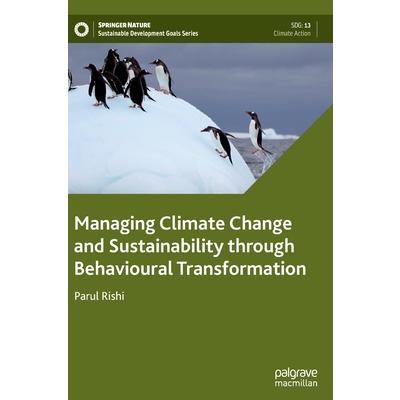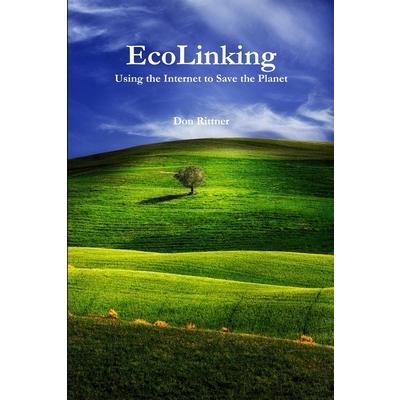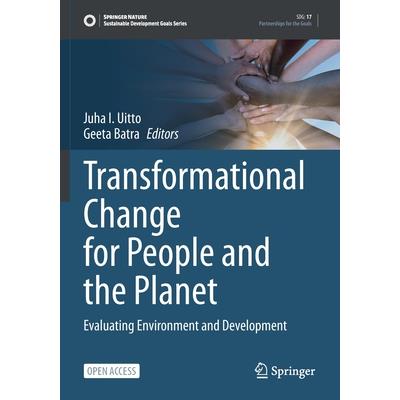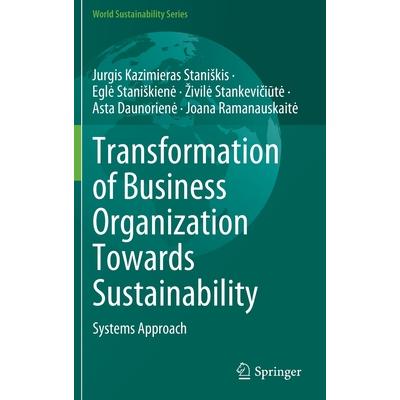Ecology and Biodiversity of Benthos
Ecology and Biodiversity of Benthos provides insights into the characteristic features of marine and estuarine benthos that play an important role in coastal ecosystem functioning, a primary level in the food chain. The book provides the latest information on multidisciplinary reflections by various researchers studying the benthic community. Through the chapters, ecosystem services are explored as a way to share approaches and scientific methods to achieve knowledge-based sustainable planning and management of benthic ecosystems. This is a helpful guide for anyone working on marine and estuarine environments, and for those who need an introduction to benthic ecology. The book has a wide range of scientific coverage since it caters primarily to the requirement of marine ecologists, marine benthologists, EIA experts, aquatic researchers, scientists, teachers and research scholars. In addition to this, it also serves as a reference for postgraduate/undergraduate students studying aquatic ecosystems.
Fundamental Principles of Environmental Physics
This book is an interdisciplinary and accessible guide to environmental physics. It allows readers to gain a more complete understanding of physical process and their interaction with ecological ones underpin important environmental issues.The book covers a wide range of topics within environmental physics, including: - natural and anthropogenic canopies, including forests, urban or wavy terrains;- the fundamentals of heat transfer;- atmospheric flow dynamics;- global carbon budget;- climate change; and- the relevance of biochar as a global carbon sink.Including solved exercises, numerous illustrations and tables, as well as an entire chapter focused on applications, book is of interest to researchers, students and industrial engineers alike.
Climate Change in the Anthropocene
Climate Change in the Anthropocene reviews current science on anthropogenic sources and projections for climatic change. Written in a clear and accessible style, the book covers this rapidly changing field, including the drivers of climate change, the physics and chemistry behind the science of climate change, paleoclimates, climate variables, a comparison of global warning of 1.5簞 vs 2簞C and the impacts of these climatic changes both at a global and a U.S. regional level. Infographics throughout help to explain concepts in a visual way, providing users with a better understanding of climate change. In addition, the book is ideal for advanced researchers who need to explain the underpinning science of climate change for grant applications and working with policy experts, etc. This is an essential book for anyone whose work is impacted by climate change in the earth and environmental sciences.
Biotic Borders
A rich and eye-opening history of the mutual constitution of race and species in modern America. In the late nineteenth century, increasing traffic of transpacific plants, insects, and peoples raised fears of a "biological yellow peril" when nursery stock and other agricultural products shipped from Japan to meet the growing demand for exotics in the United States. Over the next fifty years, these crossings transformed conceptions of race and migration, played a central role in the establishment of the US empire and its government agencies, and shaped the fields of horticulture, invasion biology, entomology, and plant pathology. In Biotic Borders, Jeannie N. Shinozuka uncovers the emergence of biological nativism that fueled American imperialism and spurred anti-Asian racism that remains with us today. Shinozuka provides an eye-opening look at biotic exchanges that not only altered the lives of Japanese in America but transformed American society more broadly. She shows how the modern fixation on panic about foreign species created a linguistic and conceptual arsenal for anti-immigration movements that flourished in the early twentieth century. Xenophobia inspired concerns about biodiversity, prompting new categories of "native" and "invasive" species that defined groups as bio-invasions to be regulated--or annihilated. By highlighting these connections, Shinozuka shows us that this story cannot be told about humans alone--the plants and animals that crossed with them were central to Japanese American and Asian American history. The rise of economic entomology and plant pathology in concert with public health and anti-immigration movements demonstrate these entangled histories of xenophobia, racism, and species invasions.
Characterizing Groundwater Flow Dynamics and Storage Capacity in an Active Rock Glacier
Alpine aquifers play a critical role in the hydrology of mountainous areas by sustaining base flow in downstream rivers during dry periods and retarding flood propagation after heavy precipitation events. Progressing climate change alters climatic and meteorological boundary conditions as well as the hydraulic response of alpine catchments by ablating glaciers and thawing permafrost. Rock glaciers exert a controlling influence on the catchment response due to their prominent groundwater storage and complex drainage characteristics. This thesis investigates the hydrogeology and internal structure of the active rock glacier Innere ?lgrube (?tztal Alps), which governs catchment runoff and is affected by permafrost degradation. A 3D geometrical model of its internal structure is obtained by combining geophysical data and permafrost creep modelling. Available data and new results are integrated into a conceptual hydrogeological model providing a sound basis for the implementation of a prospective numerical groundwater flow model. Hydraulic properties of the hydrostratigraphic units constituting the rock glacier are estimated and groundwater recharge fluxes quantified. Fundamental properties of the heterogeneous groundwater flow system within the rock glacier are discussed and compared to existing rock glacier studies.
Climate Change and Biodiversity Governance in the Amazon
This book provides an analysis of the recent governance of the Amazon in Brazil, Peru, Bolivia and Colombia with a particular focus on deforestation processes, demonstrating that current policies and political and socioeconomic dynamics in the four countries are risking the forest's resilience.The authors examine and compare Amazonian politics and policies under different administrations, concentrating on the main actors, policies and dynamics that have affected the region, as well as on the institutional and political environment in which deforestation processes were embedded in different periods. Essentially, the book makes an analytical contribution towards a better understanding of the political, economic and social challenges confronting conservation policy in the Amazonian countries.Climate Change and Biodiversity Governance in the Amazon: At the Edge of Ecological Collapse? is essential reading for students and researchers in the fields of environmental studies and sustainability, Latin American studies, political science and international relations, as well as for policymakers and practitioners working in conservation and development.
The Anthropocene Epoch
As we hear more and more about deforestation, species extinctions, pollution, and climate change, some people may wonder how we got here. Some may wonder what is being done about those things. Some people may even wonder what all the fuss is really about. In The Anthropocene Epoch, we will examine how humankind has altered the character of our home-planet Earth-over the last 10,000 years. We will take a brief tour through the many ways in which we have dramatically improved our standard of living and made life much easier for most people around the world in just a few centuries, even in the last few decades. We will also examine how our growing numbers are putting a strain on Earth's ecosystems. Human development, consumption, and waste are putting our unprecedented standard of living at risk. In response, many individuals, small businesses, and large corporations are adapting to our changing world, providing hope for our children's future. The Anthropocene Epoch illustrates how we (humankind) have changed our world, and how we have the ability to preserve it, if we will.
Communicating the Climate Crisis
Communicating the Climate Crisis puts communication at the center of the change we need, providing concrete strategies that help break the inertia that blocks social and cultural transformation. Reimagining "earth" not just as the ground we walk upon but as the atmosphere we breathe--Eairth--this book examines our consumption-based identities in fossil fuel culture and the necessity of structural change to address the climate crisis. Strategies for overcoming obstacles start with facing the emotional challenges and mental health tolls of the crisis that lead to climate silence. Breaking that silence through personal climate conversations elevates the importance of the problem, finds common ground, and eases "climate anxiety." Climate justice and faith-based worldviews help articulate our moral responsibility to take drastic action to protect all humans and the living world. This book tells a new story of hope through action--not as isolated, "guilty" consumers but as social actors who engage hearts, hands, and minds to envision and create a desired future.
Global Plant Ecology
This book aims to bring together this wide range of new information and understanding to investigate its potential to understand how contemporary and future global plant ecology will respond to environmental change.
The Seine River Basin
Trajectories of the Seine River Basin.- The evolution of the Seine basin water bodies through historical maps.- Pluri-annual water budget on the Seine basin: past, current and future trends.- The Seine watershed water-agro-food system: long-term trajectories of C, N, P metabolism.- Past and future trajectories of human excreta management systems - the case of Paris 19th-21st centuries.- How agricultural practices should be integrated to understand and simulate long-term pesticide contamination in the Seine River basin?.- Mass balance of PAHs at the scale of the Seine River basin.- Ecological functioning of the Seine River: from long term modelling approaches to high frequency data analysis.- Aquatic organic matter in the Seine basin: sources, spatio-temporal variability, impact of urban discharges and influence on micro-pollutant speciation.- Experience gained from ecotoxicological studies in the Seine River and its drainage basin over the last decade: applicative examples and research perspectives.- Sedimentary archives reveal the concealed history of micropollutant contamination in the Seine River basin.- Changes in fish communities of the Seine Basin over a long-term perspective.- Bathing activities and microbiological water quality in the Paris area: a long-term perspective.- Contaminants of emerging concern in the Seine River basin: overview of recent research.- River basin vision: tools and approaches, from yesterday to tomorrow.
Live Sustainably Now
Any realistic response to climate change will require reducing carbon emissions to a sustainable level. Yet even people who already recognize that the climate is the most urgent issue facing the planet struggle to understand their individual responsibilities. Is it even possible to live with a sustainable carbon footprint in modern American society--much less to live well? What are the options for those who would like to make climate awareness part of their daily lives but don't want to go off the grid or become a hermit? In Live Sustainably Now, Karl Coplan shares his personal journey of attempting to cut back on carbon without giving up the amenities of a suburban middle-class lifestyle. Coplan chronicles the joys and challenges of a year on a carbon budget--kayaking to work, hunting down electric-car charging stations, eating a Mediterranean-style diet, and enjoying plenty of travel on weekends and vacations while avoiding long-distance flights. He explains how to set a personal carbon cap and measure your actual footprint, with his own results detailed in monthly diary entries. Presenting the pros and cons of different energy, transportation, and lifestyle options, Live Sustainably Now shows that there does not have to be a trade-off between the ethical obligation to maintain a sustainable carbon footprint and the belief that life should be fulfilling and fun. This powerful and persuasive book provides an individual-level blueprint for a carbon-sustainable tweak to the American dream.
Plastic Matter
Plastic is ubiquitous. It is in the Arctic, in the depths of the Mariana Trench, and in the high mountaintops of the Pyrenees. It is in the air we breathe and the water we drink. Nanoplastics penetrate our cell walls. Plastic is not just any material--it is emblematic of life in the twentieth and twenty-first centuries. In Plastic Matter Heather Davis traces plastic's relations to geology, media, biology, and race to show how matter itself has come to be understood as pliable, disposable, and consumable. The invention and widespread use of plastic, Davis contends, reveals the dominance of the Western orientation to matter and its assumption that matter exists to be endlessly manipulated and controlled by humans. Plastic's materiality and pliability reinforces these expectations of what matter should be and do. Davis charts these relations to matter by mapping the queer multispecies relationships between humans and plastic-eating bacteria and analyzing photography that documents the racialized environmental violence of plastic production. In so doing, Davis provokes readers to reexamine their relationships to matter and life in light of plastic's saturation.
Toys and Sustainability
This book presents five interesting chapters dealing with the sustainability of toys. The concept of sustainability has reached all industrial sectors these days and being practiced in almost all the sectors. One of the main sectors where sustainability has to be embedded to the core is the toy sector. Needless to enumerate the importance of sustainability in this sector especially when it comes to usage of chemicals and so on. There are various elements associated with the sustainability of toys and there is a dearth of published literature on this subject.
Environmental Systems and Societies (SL)
The brand new, reworked Environmental Systems and Societies (SL) TestPrep Workbook is here! With essential exam practice questions for IB Environmental Systems and Societies revision, this book gives an accurate and exam-aligned experience for students.NEW in this second edition: Self assessment tables for students to mark themselves against each assessment objective! Find out which question types need more practice.With high quality support for both papers, this TestPrep book in the Revise IB series helps students to familiarise themselves with their ESS SL exams set by the International Baccalaureate. Find out information about the format of the papers and the types of exam questions that are set. Students practise answering the questions by writing directly into the book, just like they do in the real exam. In addition, as they work through, there are strategies, hints and support for answering the questions.From some excellent and unique practice questions for Paper 1 to invaluable advice from the experts on how to tackle Paper 2, this book provides essential exam practice support for students revising for their IB ESS SL exams.Students will...Understand what to expect from their ESS exam papers such as question types, how questions are assessed and how marks are assigned, plus information about the assessment objectivesSee example answers to Paper 1- and Paper 2-style questions - with brand new, unseen sample answers to exam-style questions and answer analysis from the point of view of an examiner.Test themselves - with FOUR complete sets of exam-style Environmental Systems and Societies practice papers (the first set includes loads of additional tips, examiner commentary and support to guide students to achieve high marks; the second and third sets have fewer helpful prompts; the last set has no additional help and is designed so students can have a go at it themselves!).Check answers - with fully-worked solutions in the back of the book.Practice exam papers are one of the best ways to make sure students feel confident, reassured and prepared for their exams. With full sets of exam-style papers to work through, Environmental Systems and Societies: TestPrep Workbook is the perfect resource for students to use as part of their exam revision - whether this is before the mock exams or before the real thing.This book can be used from the first year of the Diploma Programme.
Discordant Harmonies
Global warming, acid rain, the depletion of forests, the polluting of our atmosphere and oceans--the threats to our environment are numerous, raising justifiable concern among most of us and genuine alarm in some. But as scientist Daniel Botkin argues in this provocative book, our ability to solve these problems is limited--not by our scientific knowledge--but by the age-old myths and metaphors that shape our perception of the natural world. Indeed, our beliefs about nature have fallen well behind our knowledge. Daniel Botkin is a seasoned scientist. He has spent three decades in the field studying the changes and interactions of forests and animal species. In the 1970s he pioneered the use of computers to predict ecological trends. Now, in Discordant Harmonies, he combines his considerable expertise with the well-honed eye of the nature writer and a philosopher's sense of how ideas shape our perceptions of reality to take us on a marvelous guided tour of the natural world. His method is to introduce a problem in our beliefs about nature by giving us a fascinating case study: of predator-prey relationships, of forests evolving over centuries, of species nearing extinction, of the ways our "protection" of nature has had surprising--and often disappointing--results. Botkin's revealing case studies also highlight controversial present-day issues--like controlled burning in national forests, fishing and hunting quotas, and policy-making for management of natural resources. He looks at each of these cases in the light of past thinking and current research, revealing how old myths often blind us to the new technology and to the ways of thinking we need to solve our environmental problems. Above all, Botkin is concerned with redefining the relationship between human beings and nature, so that our needs can be met and the intricate systems of nature can persist. Whether discussing moose herds on Isle Royale or Yosemite's famous Mariposa Grove of Sequoias, Botkin writes vividly and insightfully about nature, challenging us to rethink some of our most cherished notions. Anyone who is concerned about the environment will find much here to ponder as well as the pleasure of meeting a stimulating and thoughtful mind at work.
Drinking Water Security in Rural India
This book highlights the multi-pronged strategy for achieving sustainable rural domestic water supply in India. It deepens the understanding of groundwater (predominant source of water supply) behaviour in response to natural processes in different geological settings, analyses the factors influencing the performance of water supply schemes; identifies the conditions under which groundwater-based drinking water sources become sustainable, suggests measures for improving the sustainability of drinking water wells in hard rock regions (covering 2/3rd of India's geographical area), presents a decision-making framework for planning rural water supply schemes in the country for ensuring long-term sustainability, and suggests physical strategies and policy measures for achieving them.The analyses for development and validation of various models that explain groundwater system behaviour and performance of rural water supply schemes are undertaken for different geological settings in Maharashtra, as the state represents a microcosm of the various hydrological, topographical, and geohydrological conditions encountered in the country. The final analysis for proposing nation-wide strategies considers the various hydrological, geological, geohydrological, and topographical and climatic settings and groundwater contamination and pollution in the country.
Integrated Research on Disaster Risks
This book is a collection of works written by young scientists involved in the Integrated Disaster Risk Research (IRDR). Integrated Research on Disaster Risk (IRDR) is a decade-long research programme co-sponsored by the International Science Council (merged by International Council for Science (ICSU), the International Social Science Council (ISSC), and the United Nations Office for Disaster Risk Reduction (UNDRR). It is a global, multi-disciplinary approach to dealing with the challenges brought by natural disasters, mitigating their impacts, and improving related policy-making mechanisms. The book examines multidisciplinary research and actions related to disaster risk reduction internationally. The Integrated Research on Disaster Risk (IRDR) Young Scientists programme is: - A sub-programme within IRDR which promotes capacity building of young professionals and encourages them to undertake innovative and need-based research which makes science-policy and science-practice linkages stronger. - IRDR Young Scientists Programme was started in late 2016. Currently, it is a community of 115 young researchers from over 40 countries after 3 batches of application. - IRDR network and partners provide academic advice and training courses, workshops, and programmes for IRDR young scientists. - IRDR young scientists contribute to innovative research in the field of disaster risk reduction and participate in conferences and/or social media as the ambassador of IRDR. The book is of interest to researchers and scholars in the field of governance of sustainability and environmental governance. Postgraduate students will benefit this book within courses on environmental governance, on climate change governance, and on transformation and social change processes. Societal actorsin climate change adaptation and other environmental governance fields on local, national, and international levels can benefit from the focus on societally relevant findings in the past 10 years of research on adaptiveness.
Perspectives for Biodiversity and Ecosystems
The novelty of the book is a strong focus on perception, perspectives and prediction by scientists with profound insight into the ecology of ecosystems or into human demands and activity. The challenge is to bridge from empirical data and the knowledge of the past to the possibilities of the performance in the future. We assume that there is scope for more cooperation between the fields of ecology and practical philosophy or other social sciences in organising ecosystems and shaping the cultural future of humankind, and that such collaboration should be accorded considerably more priority. This book deals with environmental processes seen within a framework of the nature of ecosystems and human cultures. The future of the environment, the development of ecosystems and effective nature conservation management are the essentials of this book. Human nature and culture, and in particular their interactions, are interpreted as a set of rules and as given. The aim is not only to assess the significance of human influence on species composition and biodiversity but also to weigh up the subsequent potentials for action. In this book we will analyze the problems independently of one another, even if they are interconnected. This book focuses on perspectives and prognoses for the impacts of anthropogenic activity on ecosystems and thus on species conservation. Its goal is to improve assessments of the impacts of human activity on the environment. We are aware that prognoses have very often proven to be false. It is difficult to impossible to be able to predict with precision how evolution and ecosystems will change in future under anthropogenic influence. This strengthens our resolve to attempt to retain the highest possible degree of scientific integrity and professionalism and not to shy away from expressing the uncertainty of our own ideas and prognoses. We venture prognoses in this book and we will fail. However, we hope that we will be wrong on the right side.
Global Sustainability in Energy, Building, Infrastructure, Transportation, and Water Technology
This book focuses on holistic approaches to sustainability in all sectors of building, infrastructure, and energy to achieve a best-balanced global energy, building, infrastructure, transportation, and water technology (EBITW) system using a series of innovative research and implementation solutions. The goal of this book is to define the context for proactive consideration of scientific theories and practical technical applications of sustainable development, following main seven themes: Renewable Energy Technology, Advanced Building Design Technology, Innovative Infrastructure and Transportation Engineering, Clean Water and Sanitation, Sustainable Urban and Rural Development, Clean Environment, and Sustainable Planet; which are very much interconnected to secure the global equilibrium. The book is prepared for a wide audience including researchers, field engineers, and students.
Quarantine Qchronicles
In an ever evolving world; Humanity must evolve with external and internal life happenings that can occur expectantly and unexpectedly! This could never be more evident than now with the world-wide Coronavirus that has plagued every community and country. Statistics recently show a 7day avg. of 618,462 globally and a total of 268,776,678 world cases. (December,10, 2021, 07:51 GMT Worldometer.com). The evolving of this coronavirus has even been presented as recently as November 2021, with a new variant called Omicron (B.1.1.529; Covid19.who;4:08p.m.; CET, December,09,2021). Omicron was first detected in a specimen collected on November 11, 2021 in Botswana, South Africa. It was reported to the World Health Organization on November 24, 2021. Humanity exists internally and externally. Our three-part being is made up of body, soul, and spirit. Exterior and interior matter evolves in our body, soul, and spirit. Our humanity is equal! Our humanity is identical! Our solution is equal! Many circumstances and events that occur in life are inevitable. They encounter us in many evolving formations. It's imperative that we are exposed to the variants of truth for our body, soul, and spirit. We will discover in this book that we can encounter and know profound solutions to inevitable happenings in our lives! Our Humanity is equal! Our Humanity is identical! Our Solution is equal! My Name is Tonya R.B. Hunter. I am married and have 4 offspring. 2 male adults and 1 female teenager. I have 1 child in Heaven. I am a first time grandmother. What a blessing to see a third round of offspring and inheritance! I am grateful and thankful for my family whom I love: Orlando, Terrell-Kai, Emmanuel, Gracelynn and Ashley. We currently live in Cincinnati, Ohio and Katy, Texas. I enjoy walking and outdoors; watching and playing sports; going to the Blood Bought Church; traveling; sharing the love of God; witnessing to souls in diverse ways; shopping for rare and unique items; praising and worshiping God; helping and giving. You can reach Tonya at: tonyajhunter50.wixsite.com Instagram-tonyajhunter50; FB Tonya Hunter; YouTube- Servant Evangelist Tonya Hunter
Aviation Noise Impact Management
Introduction: Understanding the basics of aviation noise.- Status: Noise burden in Europe.- Part I: Regulating and reducing noise today.- Balanced approach to aircraft noise management.- Perspective on 25 years of European aircraft noise reduction technology efforts and shift towards global research aimed at quieter air transport.- Future aircraft and the future of aircraft noise.- Competing agendas for land-use around airports.- Part II: Beyond flying machines, Human beings.- Impact of aircraft noise on health.- Coping with aviation noise: Non-acoustic factors influencing annoyance and sleep disturbance from noise.- Engaging communities in the hard quest for consensus.- Towards innovative ways to assess annoyance.- Towards mapping of noise impact.- ANIMA noise platform and ANIMA methodology: One-stop shop for aviation noise management.- Overall perspectives.
The Elephant and the Dragon in Contemporary Life Sciences
This book provides a powerful diagnosis of why the global governance of science struggles in the face of emerging powers. Through unpacking critical events in China and India over the past twenty years, it demonstrates that the 'subversiveness' assumed in the two countries' rise in the life sciences reflects many of the regulatory challenges that are shared worldwide. It points to a decolonial imperative for science governance to be responsive and effective in a cosmopolitan world. By highlighting epistemic injustice within contemporary science, the book extends theories of decolonisation.
Our Synthetic Environment
Originally published in 1962, Our Synthetic Environment explores the negative effects that chemicals and other toxins in the environment have on human health. From the degradation of our food and soil due to industrial agricultural methods, to how pollution and radiation are the causes of illnesses like cancer, this book was visionary in its anticipation of many of the ecological problems our planet currently faces. Written by one of the leading eco-thinkers of the twentieth century, Our Synthetic Environment is as vital a read today as it was when it was first published.This new edition of Our Synthetic Environment features an introduction by Bill McKibben.
Elastic Optical Networks
The rapid growth in communications and internet has changed our way of life, and our requirement for communication bandwidth. Optical networks can enable us to meet the continued demands for this bandwidth, although conventional optical networks struggle in achieving this, due to the limitation of the electrical bandwidth barrier. Flexgrid technology is a promising solution for future high-speed network design. To promote an efficient and scalable implementation of elastic optical technology in the telecommunications infrastructure, many challenging issues related to routing and spectrum allocation (RSA), resource utilization, fault management and quality of service provisioning must be addressed. This book reviews the development of elastic optical networks (EONs), and addresses RSA problems with spectrum fragment issues, which degrade the quality of service provisioning. The book starts with a brief introduction to optical fiber transmission system, and then provides an overview of the wavelength division multiplexing (WDM), and WDM optical networks. It discusses the limitations of conventional WDM optical networks, and discusses how EONs overcome these limitations. It presents the architecture of the EONs and its operation principle. To complete the discussion of network architecture, this book focuses on the different node architectures, and compares their performance in terms of scalability and flexibility. It reviews and classifies different RSA approaches, including their pros and cons. It focuses on different aspects related to RSA. The spectrum fragmentation is a serious issue in EONs, which needs to be managed. The book explains the fragmentation problem in EONs, discusses, and analyzes the major conventional spectrum allocation policies in terms of the fragmentation effect in a network. The taxonomies of the fragmentation management approaches are presented along with different node architectures. State-of-the-art fragmentation management approaches are looked at. A useful feature of this book is that it provides mathematical modeling and analyzes theoretical computational complexity for different problems in elastic optical networks. Finally, this book addresses the research challenges and open issues in EONs and provides future directions for future research.
Mathematics and Culture VI
Homage to Mario Merz.- The Eclipse.- Merz and Fibonacci, Vital Proliferations in Mathematics and Contemporary Art.- The Cinema According to Fibonacci.- Mathematics and Images.- PDEs, Images and Videotapes.- Mathematics in the Air with Solar Impulse.- The Marriage Game.- Mathematics and Psychoanalysis.- Mathematics for Psychoanalysis. Brouwer's Intuitionism from Descartes to Lacan.- Mathematics and Applications.- Search Engines and Mirrors of Society.- Mathematics and Cells: Brief Tales of Chemotaxis, Neurons and a Few Digressions.- Surprising Coincidences and Some Misunderstandings About "Rare" Events.- Mathematics and Design.- The Square Fish.- The Square: Homage to Bruno Munari.- Mathematics and Cartoons.- ?variste and H矇lo簿se.- Mathematics and Animated Cartoons.- Mathematics and Art.- Abstraction.- The Language of Mondrian: Algorithmic and Axiomatic Investigations.- Nature-Mathematics. An Operative Language.- Mathematics and Words.- Prime Time Entertainment.- Writing About Ramanujan.- Maat and Thalia.- Mathematics and Cinema.- Assioma 5: A Scientific, Mystical, Historical Film.- Mathematics and Wine.- Mathematics and Wine.- Homage to Alfred D繹blin and Vincent Doeblin.- Doeblin and Kolmogorov: The Mathematisation of Probability in the Thirties.- Wolfgang Doeblin and the Kolmogoroff Equation.- Venice.- The Masks of Venice.- Venice and Marco Polo.- In Venice, Inside Its Grand History.- Telling the Wonders of the Discovery of America.
An Introduction to Biostatistics
This book has been written with the objective of providing a basic textexplaining the principles of statistical measures and methods as appliedto biological problems.Accordingly, the author has also revised thisbook to include a few chapters on computer fundamentals. In addition, a chapter on the use of MS Excel software in Biostatistics is includedto encourage the students to try this highly user-friendly computerprogram.This book shall be useful to all undergraduate and postgraduate students a
Solid Waste Management
Chapter I - Introduction, Chapter II - Solid Waste Management: An Overview, Chapter III - Conceptual and Theoretical Frameworks, Chapter IV - Environmental Analysis With Special Reference to Waste Management, Chapter V - Residential Waste Management in Town Panchayat: Micro Level Analysis, Chapter VI - Findings, Suggestions and Conclusion. Solid Waste Management is a worldwide phenomenon. Improper management of solid waste causes hazards to inhabitants and residents and affects the wealth and he
Mushrooms of Gujarat
This edited book cover over 200 mushrooms with detailed profiles of all the species. Each profile includes information on macro-morphology, molecular characterization, application and a color photograph of the same. Gujarat mushrooms gives a complete idea of mushrooms found in Gujarat, there morphological identification, molecular barcoding and documented applications. Data presented on mushrooms spans collections of three consecutive years. The collected mushrooms were identified morphologically as well as at the molecular level using ITS as a marker. 942 specimens covering 316 species were submitted to BOLD. Of these the macrofungal diversity covered around 200 species. Some of the collected mushrooms were not only edible but were found to have nutraceutical as well as industrial value. Although the mushrooms collected are from Gujarat region only they are reported from different areas around the globe. Hence the proposed book will be useful not only regionally but across countries as well. Mushrooom is a macro fungus with a distinct fruiting body. Wild mushrooms have a significant biological and economic impact. The texture and pleasant flavor of certain mushrooms make them a delicacy for mankind. Mushrooms have a very high medicinal value as well with several reports of anticancer properties of mushroom extracts. This book is a useful read for researchers and academicians interested in mushrooms.
Plant Biotechnology
This book explains new and rapidly growing concepts and technologies connected within vitro plant regeneration and transgenesis and provides an in-depth coverage of allmajor topics of plant in vitro technology. The vast literature on the subject has beenpresented in a concise and digestible form thoroughly covering the fundamental as wellas applied aspects of the subject. This book would be an ideal source of comprehensive, authoritative and up-to-date information for undergraduates, post-gradua
Computational Biology
With more and more people depending upon interactive software applications, web applications, mobiles and other digital devices, this book gives the essence of computers and programming that would be useful for life scientists, as the first part. The topics in this part would suit the needs of the life scientists and this would lead them to learn more about the technical aspects of algorithms they come across in Bioinformatics, once they find themselves masters in programming. The second
Electron Microscopy
The advent of electron microscopes has opened up new vistas in the field of science. The ultrastructural morphological evidence offered by electron microscope to substantiate and support other findings is highly rewarding. This book gives a comprehensive overview of the principle and operations of the electron microscope. Numerous electron micrographs have been provided to acquaint the reader with the appearance of highly magnified features seen through the EM. This book would definitely create
Medical Parasitology
Parasites and parasitic morbidity and/or disease seem to be a birth right of the tropics. This is a sequel to greater biodiversity fragmented in relation to biogeography and climatic shifts congenial to nocturnal enemies of humans, like mosquitoes. At the base of parasitic diseases, man has recognized a dichotomy namely, animal diseases and diseases of man but there may be links between humans and animal (zoonoses).We are just begining to understand what is known as zoonoses. India can now boast
Upstream and Downstream Processing of Bioproducts
This critically reviewed book gives a comprehensive account of the basics of bacteria and fungi, isolation of microorganisms, scale-up by submerged culture as well as solid state fermentation and downstream processing. It gives a clear idea as to how a product is developed from a microorganism. The target audience will be the undergraduate students of biotechnology, microbiology, biochemistry and leather technology and enzyme manufacturers.
Chemistry of Natural Products
Natural products, i.e., products from Nature, be it of plant or animal origin, plays a major role in human life. Hence the isolation and characterization of natural products will help in understanding their mode of action with reference to their biological and pharmacological activity. The book has been written with a view that it would help both students and researchers who are in their nitial stages of exploration in the field of Natural product chemistry. With the oluminous information avai
Horticulture
Horticulture is a vast field exceedingly rich in opportunities. It is a science, art and business, and involves both production of food and beautification of our surroundings. This book provides a complete introduction to basic horticulture, plant propagation and ornamental horticulture. Topics that are more relevant to the present scenario have been given more emphasis. This book would serve as a useful instructional material for undergraduate students of Agriculture, Horticulture and Botany.
Animal Tissue Culture
Animal cell and tissue culture has been one of the foremost techniques paving the way for recentcutting-edge technologies such as vaccinology, monoclonal antibody production, therapeuticcloning, stem cell technology, etc. This book covers a formal introduction and provides the basicsin understanding the concept of tissue culture traversing through the state-of-the-arttechnologies such as stem cell, hybridoma technology, transgenesis, cloning and scaling-up technologies. This book will impart up-
Objective Biochemistry
Objective type of questions for assessment of an examinee's knowledge broaden the coverage of syllabi, enable the analytical thinking of the examinees to be tested and reduce the element of subjectivity in the system of assessment. This book provides a comprehensive question bank to students, covering nearly all the important areas in biochemistry and consists mostly of multiple choice questions which constitute an important method of objective assessment. It would be useful for students prepa
Chordate Evolution
This book has been put forth as a general text book with the aim to provide a comprehensive and integrated account on chordate evolution. Chordata is a taxon which includes the well known vertebrates such as fishes, amphibians, reptiles, birds and mammals including human beings and are well represented in marine, fresh water, and terrestrial habitats. The subject matter of the book has been written in an easily accessible language and style. No doubt that this manual will be highly valuable to t
Environmental Studies
in enzyme technology, biosensors, ribozymes and artificial enzymes.
Mammals
Mammals form the highest group in the animal kingdom and are called 'Vertebrates on top'. This book is an effort to bring under one roof, whatever one needs to know about mammals. The reptilian origin, their classification which covers all the existing prototheria, metatheria and eutheria, and all orders are discussed with examples and relevant diagrams. It brings to the reader, various facts about mammals in a sequential and systematic way. The book also discusses the economic importance as wel
Lca Based Carbon Footprint Assessment
This book discusses the concepts, methods and case studies pertaining to Life Cycle Assessment (LCA) based Carbon Footprint Assessment. It covers chapters on Carbon Footprint Assessment with LCA methodology & case studies on carbon footprint calculation following the LCA approach on power plants in India, Impacts of Vehicle Incidents On CO2 Emissions and school buildings in India.
Managing Climate Change and Sustainability through Behavioural Transformation
This book addresses climate change and sustainability management from a transdisciplinary perspective which encompasses within itself how different humanistic disciplines can culminate with each other to move ahead with the agenda. Issues of adapting to climate change and sustainability management have been gaining global prominence over the past few decades. There have also been volumes of literature that highlight the technical dimensions of climate change and sustainability across regions and cultures. However, they have had limited strength to bring direct and desirable impact in promoting pro-climate action and sustainability behaviour. The major reason for this is limited inclusion of pluralistic perspectives into human cognition and affect, and resultant limited public acceptability. Although behavioural science as a discipline has taken a front seat in promoting behavioural transformation, the book argues that other humanistic fields of understanding like education, art, literature, philosophy, political science, sociology, economics, etc., have to be integrated in order to present a holistic standpoint to sustainability literature.
Handloom Sustainability and Culture
This first of the three volume series highlights the intricate relationship in the handloom industry between its culture and the various areas of sustainability. While there have been major disruptions in this age old industry, this volume presents the luxury and the entrepreneurship aspects to keep the industry moving ahead. The book contains seventeen chapters written by leading experts in the areas and discusses means to revive some of the cultures that are on the verge of closing/shutting down.
EcoLinking
EcoLinking is a how-to manual and from start to finish you will gain the tools to fight for your piece of the planet. This book is for the student, the housewife, the farmer, teacher, and anyone else who feels compelled to do something about the destruction of the environment, locally or globally.
Transformational Change for People and the Planet
This Open Access book deals with the pressing question of how to achieve transformational change that reconciles development with environmental sustainability. It particularly focuses on the role of evaluation in finding sustainable solutions. Environment and development are closely interlinked, as are human health and ecosystem health. The pandemic that began in 2020 demonstrated in no uncertain terms how destruction of habitats has allowed hitherto unknown pathogens spill over to humans wreaking havoc on people's lives and livelihoods. We are already seeing the impacts of global climate change in terms of heatwaves, forest fires and increased storms. The Sustainable Development Goals (SDGs) explicitly recognize the equal importance of the social, economic and environmental dimensions of development. In these turbulent times, when humankind faces multiple complex challenges it is essential to know that our responses are effective and that they make a positive difference. Evaluationcan provide invaluable lessons to how we design policies, strategies and programs and how we allocate limited resources between competing priorities. This book brings together key thinkers and practitioners from the public and private sectors, from major multilateral organizations and from bilateral donor agencies, to present the latest knowledge and experience on how to evaluate interventions in the nexus of environment and development. The book does not promote any particular approach or methodology, but rather emphasizes the need for mixed methods to address the question at hand in the best and most suitable manner. It covers cases from a variety of fields, from climate change mitigation and adaptation, energy efficiency and renewable energy, natural resources management, biodiversity conservation and more.This book is not a conference proceedings although it has its roots in the Third International Conference on Evaluating Environment and Development organized by the GEF Independent Evaluation Office in October 2019. The conference brought together a larger number of established and upcoming evaluators, researchers and evaluation users from the Global North and South, representing a wide variety of organizations, to discuss the frontiers of environment and development evaluation. Following the conference, the editors identified and contacted the participants who made key contributions at the conference and asked them to develop their ideas and papers into book chapters according to a coherent plan.
Transformation of Business Organization Towards Sustainability
We have entered a new era where business, technologies, communities, and even pandemic deceases cross borders with unprecedented speed and intensity. 2030 Agenda and 17 SDGs reflect the global community's high expectations of finally reversing the destruction of our natural and social habits, and achieving a more balanced and equitable pathways toward well-being of all. However, despite the initial efforts, the world is not on track to achieving the most of the 169 targets that comprise the goals. It is evident that we have a system problem, so we need a system solution. Authors presented a hierarchical system consisting of two-level management systems: first level-unsustainability reduction systems and second level-control system for transformations toward sustainability. The book clearly shows that implementation of systems for unsustainability reduction and for transformations toward sustainability is possible, and that sufficient knowledge is available to get started. It is designed for researchers, practitioners, and politicians.







